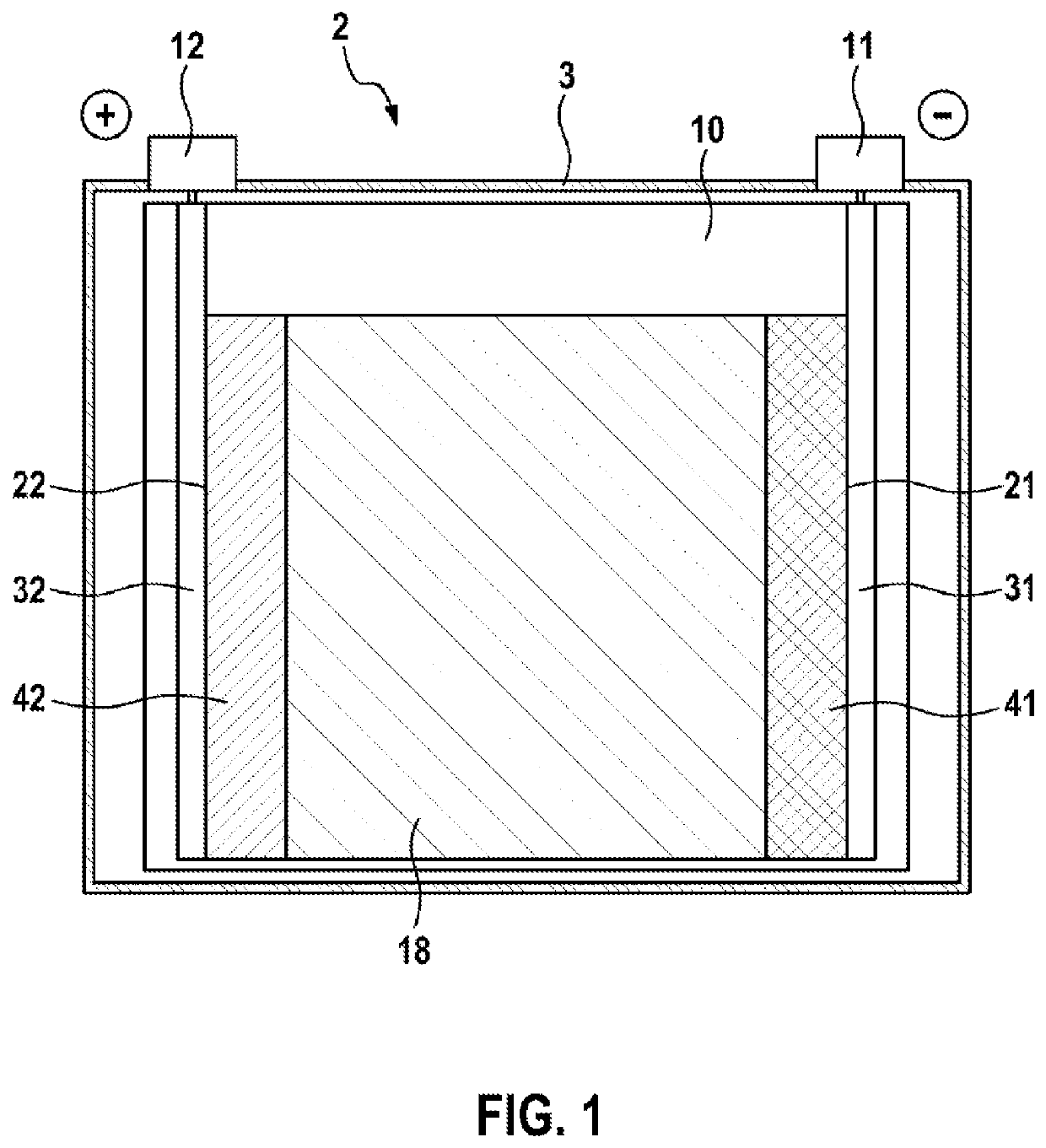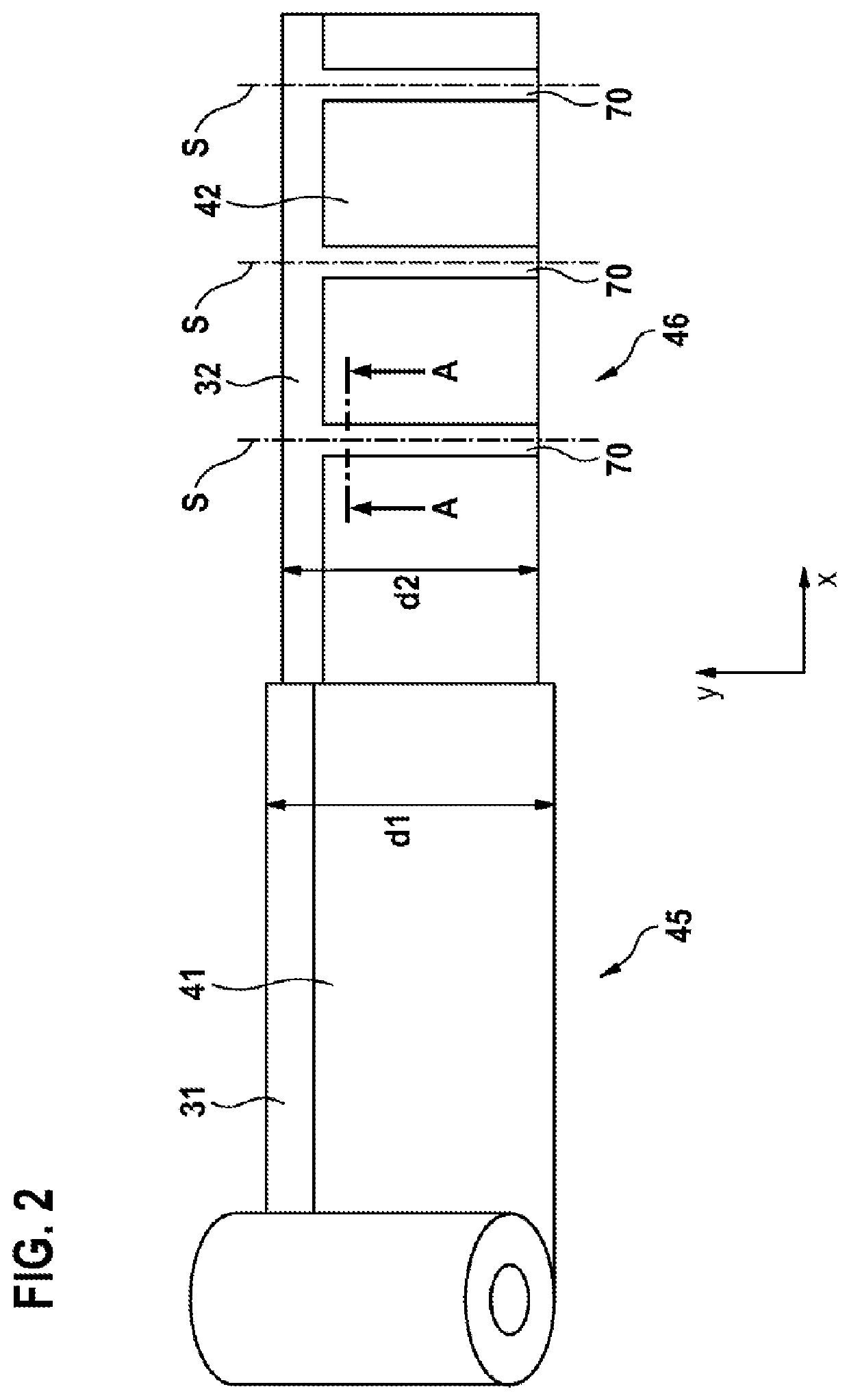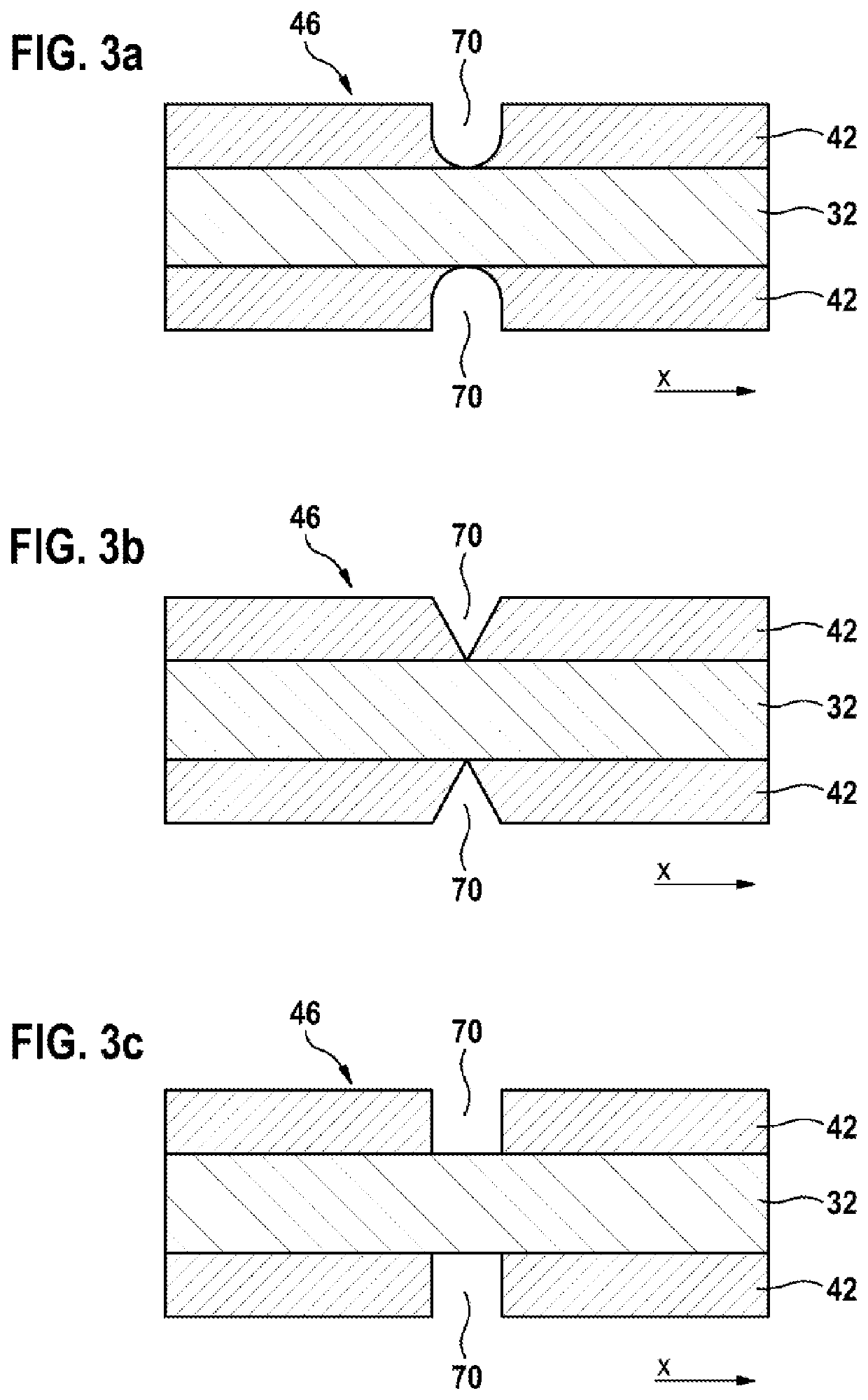Method for producing an electrode stack for a battery cell, battery cell
a battery cell and electrode stack technology, applied in the direction of wound/folded electrode electrodes, cell components, batteries, etc., can solve the problems of reducing the capacity of the battery cell, metallized lithium is no longer available for charge transport, etc., and achieves the effect of reducing process time, avoiding or at least avoiding metallized lithium, and reducing the cost of production
- Summary
- Abstract
- Description
- Claims
- Application Information
AI Technical Summary
Benefits of technology
Problems solved by technology
Method used
Image
Examples
first embodiment
[0049]FIG. 3a shows a schematic sectional representation of the cathode element 46 along the section line A-A in FIG. 2 according to a The grooves 70 in this case have an approximately U-shaped cross section. The outer walls of the grooves 70 initially extend parallel to one another in a region away from the cathodic current collector 32, and merge into a semicircular rounding when approaching the cathodic current collector 32.
second embodiment
[0050]FIG. 3b shows a schematic sectional representation of the cathode element 46 along the section line A-A in FIG. 2 according to a The grooves 70 in this case have an at least approximately triangular cross section. The outer walls of the grooves 70 are spaced relatively wide apart from one another in a region away from the cathodic current collector 32, and extend at an angle to one another and converge when approaching the cathodic current collector 32.
third embodiment
[0051]FIG. 3c shows a schematic sectional representation of the cathode element 46 along the section line A-A in FIG. 2 according to a The grooves 70 in this case have an at least approximately rectangular cross section. The outer walls of the grooves 70 are spaced apart from one another in a region away from the cathodic current collector 32, and extend parallel to one another, and perpendicularly to the cathodic current collector 32, towards the cathodic current collector 32.
[0052]FIG. 4 shows a schematic sectional representation of a composite element 50, which comprises a cathode element 46 according to the first embodiment, as shown by FIG. 3a. The composite element 50 furthermore comprises an anode element 45, as well as a first separator element 16 and a second separator element 16.
[0053]The cathode element 46 is in this case applied onto the first separator element 16 and connected to the first separator element 16. The anode element 45 is applied on a side of the first sep...
PUM
 Login to View More
Login to View More Abstract
Description
Claims
Application Information
 Login to View More
Login to View More - R&D
- Intellectual Property
- Life Sciences
- Materials
- Tech Scout
- Unparalleled Data Quality
- Higher Quality Content
- 60% Fewer Hallucinations
Browse by: Latest US Patents, China's latest patents, Technical Efficacy Thesaurus, Application Domain, Technology Topic, Popular Technical Reports.
© 2025 PatSnap. All rights reserved.Legal|Privacy policy|Modern Slavery Act Transparency Statement|Sitemap|About US| Contact US: help@patsnap.com



